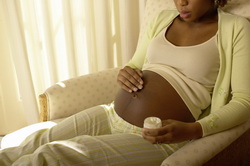Many babies IVF have been born in this world more than 30 years after the first successful IVF live birth. In 1978, Louise Brown was born through cesarian section in the United Kingdom. The process was developed by Robert Edwards and gave him a Nobel Prize in Medicine. Since 1978, much advancement had been made to further increase success rates and lessen complications.

Currently, the success rate is more than 40% for women below 35 years old. For women aged 41, successful live birth is less than 15%. The higher the age the more complications are reported for both the mother and the baby IVF.
Women who put off family planning and childbearing at a much later time would sometimes find themselves having a difficult time to conceive naturally. It is true that as age advances, chances of conception declines. It is a medical condition which has either known or unidentified causes.
Infertility Causes
For females, infertility can be due to significant changes in the structures and functions of the reproductive system. Blockage due to clots, stenosis and inflammation can hinder the meeting of the ovum and sperm. This is the reason why fertilization can't be achieved.
Males are dependent on their semen count and quality. Generally, per ejaculation would produce 40 million sperms in 2mL semen. At most 25% would die as soon as it is deposited into the vaginal cavity since semen is alkaline in nature while the vagina is acidic. The sperm cells that survive should have fluid and vigorous forward motions. Low-quality semen would not allow any sperm to reach the eggs thus there is failed fertilization.
Producing Baby IVF
There is a set of steps followed to create a baby IVF. First, the mother is injected with follicle-stimulating hormones. At least 3 of these follicles should each produce an egg for favorable aspiration. The matured eggs are harvested transvaginally with the aid of an ultrasound.
Baby IVF is made when the harvested eggs and sperm are combined in a fluid medium which is specifically made to promote human cell development. The gametes can be either from the couple or a donor. They are then cultured for five days before they are taken out to be implanted in the woman's uterus. Embryologists would choose at least 2 embryos to be implanted based on the number of cells they have and the consistency of the cells' growth. Normally, at the blastocyst stage, an embryo should have 8 cells.
The process normally takes about 3 weeks and is an out-patient procedure hence, no hospital stay is needed. The recovery time during the aspiration and implantation is at least an hour. After the fertilized ovum is transferred, it is highly recommended to have bed rest. In some cases, the woman will have to take progesterone-based medications to further assist in the pregnancy.
After 4 weeks, a pregnancy test is done. If the result is positive, normal prenatal care will follow until delivery. Baby IVF can be given birth to either through natural delivery or cesarian section. If the IVF fails, further probing will be done to note the reasons for failure. Some couples would try IVF the second time and certain adjustments will be made accordingly.
